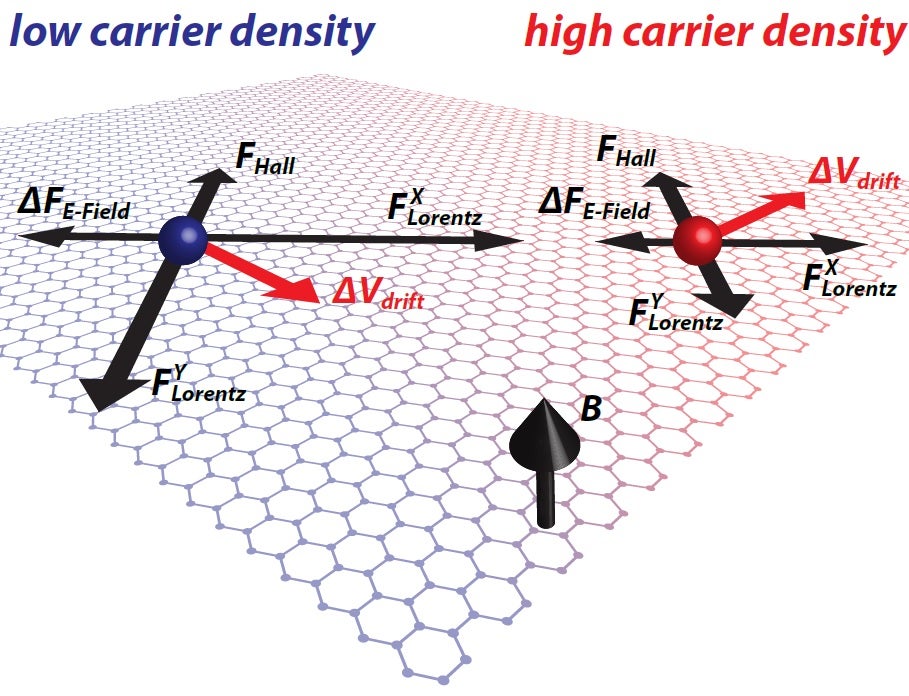A new mechanism for magnetoresistance
Shaffique ADAM (Group Leader, Physics) () August 13, 201413 Aug 2014. Professors in NUS have discovered a new mechanism for magnetoresistance in disordered two-dimensional (2D) materials.
A collaboration between researchers in Monash University, University of Maryland and NUS has resulted in the theoretical prediction and experimental observation of a new mechanism by which an applied magnetic field can increase the resistance in disordered graphene and other 2D materials. This mechanism raises the possibility of new designs for magnetic memory devices.
Depending on experimental conditions, the charge carriers in graphene may be electrons, holes or both. It is well known that when both electrons and holes are present, the system becomes more resistive upon the application of a magnetic field. However, it is generally believed that when only one type of carrier is present, then at room temperature, the system would not have this magnetoresistance. By using an effective medium theory, Professor Shaffique ADAM’s team from the Department of Physics in NUS realized that in highly disordered systems, the fluctuations of the local carrier density could also result in magnetoresistance, even when there was only one type of carrier present. They predicted that this magnetoresistance should be a universal function of the ratio of the carrier density and the fluctuations in the carrier density. And that when this ratio is large, it follows a simple power law. Working with experimentalists Professor Michael FUHRER from Monash Univeristy (Australia) and his students Dr Jinglei PING and Dr Sungjae CHO at the University of Maryland (USA), they showed that these theoretical predictions were in excellent agreement with the experimental observations on both exfoliated and CVD-grown graphene.
This work is of great interest; both from a fundamental point of view since the theoretical mechanism applies not just to graphene, but to a large class of disordered two-dimensional materials, and also from a technological point of view due to the possibility of using this new mechanism to design materials for use in magnetic memory devices (see Figure). This work appears in the latest issue of Physical Review Letters.

Image shows the microscopic origin of the disorder induced magnetoresistance. The left region shown in blue represents area with lower than average carrier density, while the right region (in red) has higher than average carrier density. The force diagram shows all the new forces (except from the change in drag force) that appear when the magnetic field is applied. For both the high density and low density region, the change in drift velocity is against the direction of motion for the carriers indicating a positive magnetoresistance. Calculations using an effective medium theory show that this effect is quite generic and depends on the ratio of the carrier density fluctuation and the average carrier density, and scales as a power law, when this ratio is small. (Picture credit: Dr Jinglei PING)
Reference
J Ping, I Yudhistira, N Ramakrishnan, S Cho, S Adam, MS Fuhrer. “Disorder-Induced Magnetoresistance in a Two-Dimensional Electron System.” Physical Review Letters 113 (2014) 47206.


